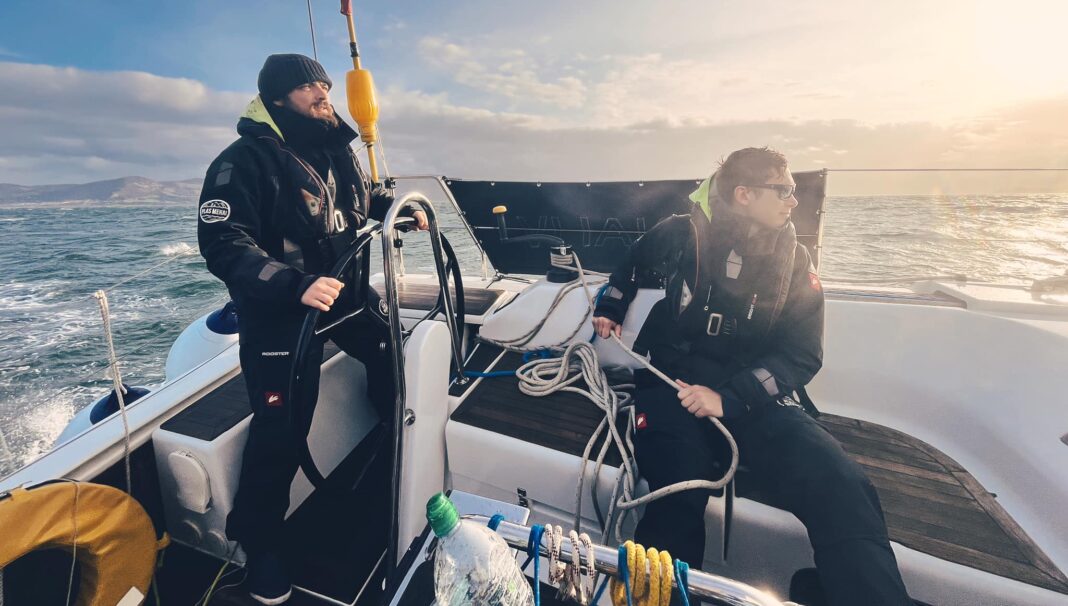In the summer while traversing the Cullin ridge with James 2, I remember looking out to the islands surrounding Skye and imagining how awesome it would be to travel between remote islands or around the coast by boat. My original idea was to use a sea kayak to travel between the different islands and then go wild camping/climbing on the islands.
After a bit more thought I decided that sea kayaking was impractical for longer distances, I wouldn’t be able to carry much stuff and I’d probably get tired after paddling a few km. A few years earlier SUSS went yachting off the coast of Majorca, using wind rather than muscle power to travel the seas seemed far more appealing.
I did a quick Google image search and could already imagine charting a course along a stretch of the Mediterranean coast, snorkelling, climbing and venturing into sea caves all while collecting photographs for my carefully curated Instagram profile that would make people envy my perfect life.
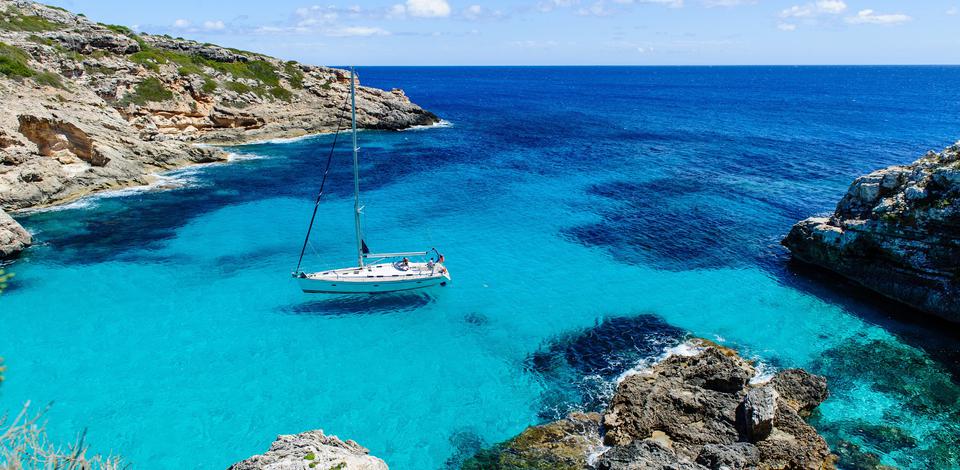
The good news was that sailing is relatively cheap – compared to say a skiing holiday. An 8-person yacht can be hired for a week for about £1,500. Including insurance, mooring fees, travel to the yacht and food you’d be looking at about £600-700 per person for a week’s sailing holiday.
The one problem with my plan was that I knew absolutely nothing about sailing. Other than that there are lots of things that can go wrong if you don’t know what you’re doing… So I decided to jump in the deep end with a £650 week-long sailing course recommended by Helen Fairclough, the course was around Anglesey and the Menai Straits with Plas Menai Outdoors Centre. Asking around at first I struggled to find anyone to go with me until I asked Jack Dewison who was keen to get involved.
Jack and I arrived at Plas Meni on Sunday evening, served a nice meal in the canteen then introduced to our other crew mate Jonty and instructor Olli. Prior to our arrival, we were given little information about the course and what it would entail but once we got going it was clear the centre was quite well set up, we were each given a set of decent quality sailing waterproofs and the boat was stocked with plenty of food for the trip. Arriving at the boat our cabin was a love heart-shaped bed in the bow how very romantic.
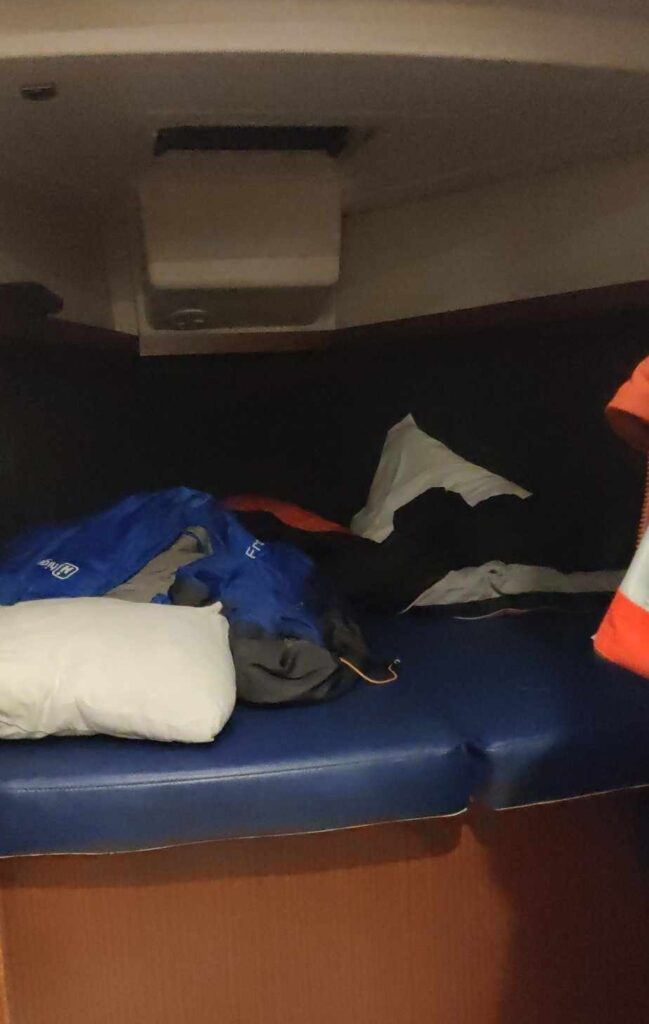
Much of the evening and the next morning was spent familiarising us with the boat and going over emergency procedures, e.g. how to use flares, what to check before setting sail, fire fighting, radio distress calls, life jackets and lifeboat stuff. Once this was done our first task was to chart a course through the Menai Straits (a narrow stretch of water separating Angelsey and Wales). This stretch of water can be quite difficult to navigate if not traveled at the right time due to strong tides, whirlpools and sandbanks. After working out the right time for high tide and slack water we set off down the straits towards Penmon Point where we dropped anchor by Trwyn Du Lighthouse.
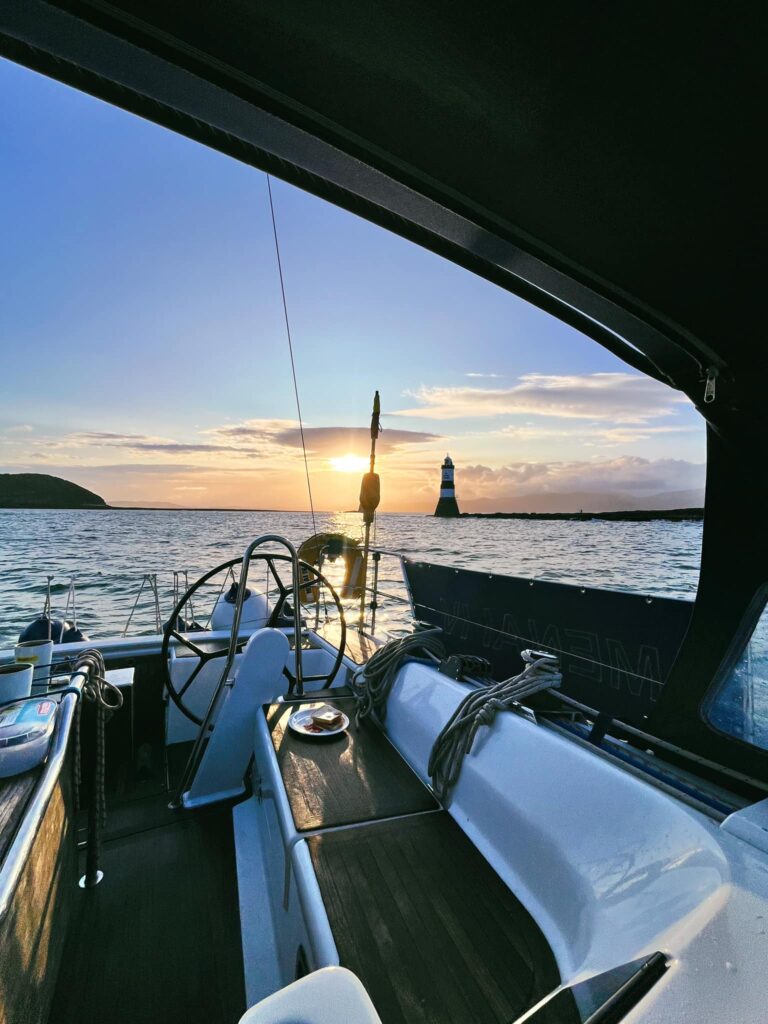
Due to the strong tides, the water was reasonably choppy, causing the boat to rock around quite a lot. This is when the sea sickness set in (interestingly lying down caused the sea sickness to stop), as Jonty and Jack charted a course to Conwy I turned green and spent most of the evening and the following morning throwing up over the side of the boat. Trying to learn anything or even be vaguely useful while really nauseous was difficult, I spent most of the day as a zombie with little idea of what was going on.
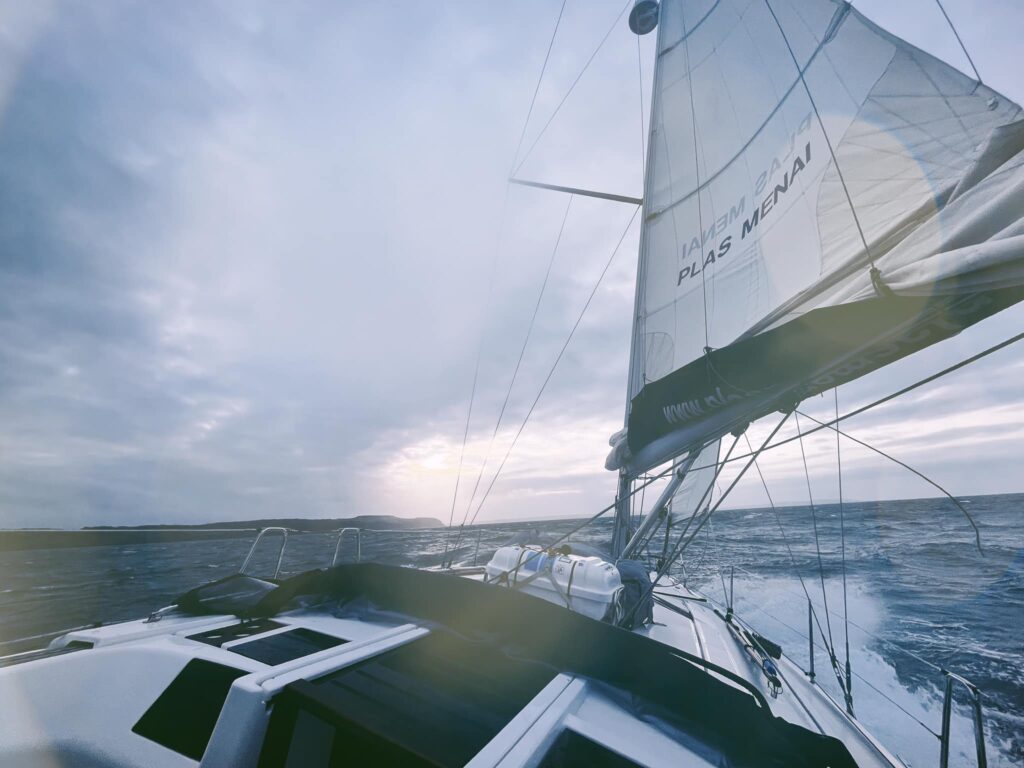
After completing our pontoon training we set sail from Conwy to Puffin Island, the forecast was for force 7/8 winds and choppy seas. The next few hours were far more exciting than anything I’d anticipated coming onto the course, with the sail up and strong winds our boat was heeled over at 45° heading into the wind, as the waves got bigger boat would crash down over the top of each wave into the water causing us to get soaked by the spray – despite only travelling at about 8 knots it felt epic. Considerable effort was required at the helm to keep the boat pointing in one direction as the waves would cause the boat to want to turn to one side or the other. All the while Olli our instructor looked completely in control standing with his hands behind his back leaning as the boat swayed from side to side, while calmly giving us instructions.
After arriving at Moelfre the origonal plan was to set sail again early in the morning so we could complete the night sail part of the course, however as the winds were getting stronger we decided to set off back to Puffin Island towards Menai Bridge immediately. The night sail was fun, a series of lit-up port and starboard Boyes guided us through the straits at high tide towards a boat mooring area where we settled down for the night.
The next day we practised Tacking and Jibing, this is when for me the operation of a sailboat started to become slightly less like witchcraft. When travelling upwind the sail/boat acts like a wing, creating lift but in a forward direction, by changing the position of the boat relative to the sail you can cause the boat to speed up and slow down, the boat can only travel at around 45° to the oncoming wind meaning you have to turn relatively often to make progress upwind, the jib acts to funnel more wind across the mainsail providing more power and more speed. When travelling downwind the sail acts more like a kite, letting more of the main sail out and letting the wind push the boat downwind at a greater speed. Communication between the helm and crew was important to ensure each turn was performed safely without the sail jibing violently or the boat stalling during a tack. When performing a tack the helmsman first confirms whether the crew are ready: “Ready to tack?!” once ready the crew responds “Ready!” the helmsman then turns the boat waiting for the jib to luff, when the moment is right the helmsman says “release!” which is the signal for the crewmember on the tight jib sheet to release their line from the jib sheet winch so that it can be taken in on the other side. Jibing is a similar operation, before turning downwind the helmsman turns the boat slightly until the jib just starts to luff then says “standby to jibe” which is the signal for the crew to take in the mainsheet. Once the mainsheet is tight and the sail is centred the helmsman turns the boat, and the boom then starts to whip across the boat, as this happens the helmsman says “Jibe ho!” which is the signal for the crew member on the mainsheet winch to absorb the shock of the mainsail. If that sounds confusing and doesn’t make any sense that’s pretty much how I felt while reading the books or it was being explained to us and while we were doing it.
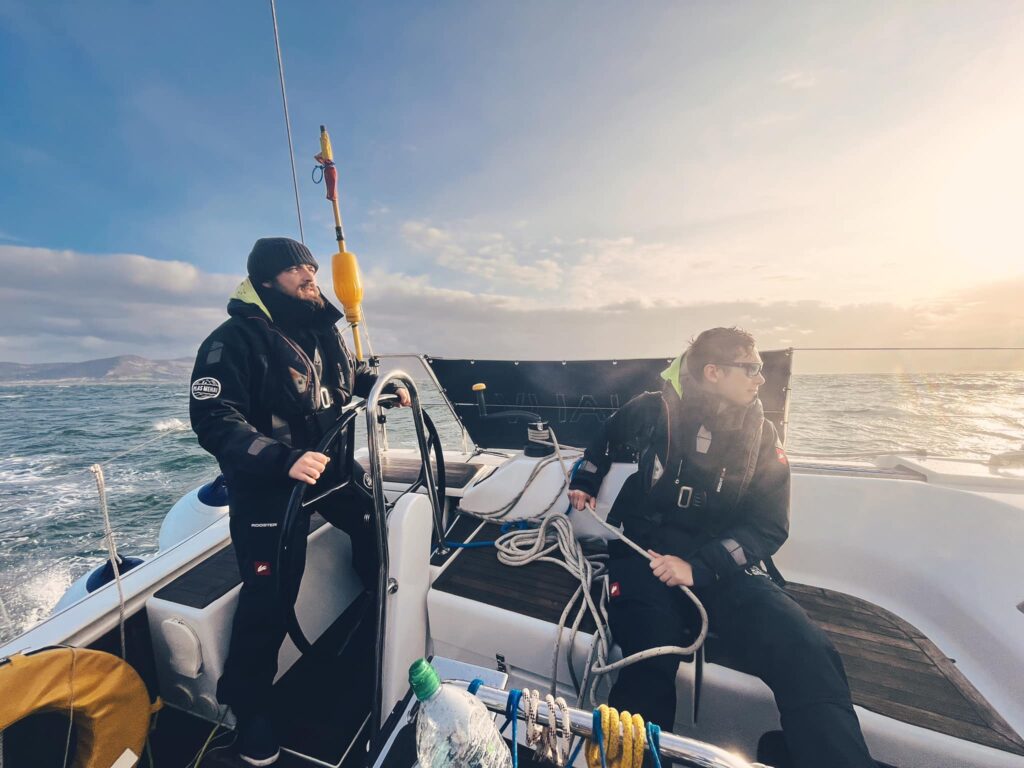
The final couple of days were spent doing more mooring menourers and man overboard drills, both under engine and under sail. Performing these more complex manoeuvres is kind of like doing a mid-rope changeover, where you can only really do it once you properly get to grips with how the boat works. My conclusion from the week is that sailing a yacht is way harder than I first thought with many variables to consider: the changing direction/strength of the tide, the wind direction, the setup and position of the sail, underwater obstacles, other boats, changing weather and that’s if everything is going as planned.
Although apparently sailing around Anglesey and the Menai Straits in force 7/8 winds is way harder than anything we’d encounter in the Mediterranean so we’re probably safe. The course I did was the RYA competent crew certification, I’d highly recommend Plas Menai Outdoor Center to anyone looking to get into coastal water activities. Olli was a great instructor and the courses are pretty good value for money considering what you get out of them. I’ll probably head back next summer to do the day skipper course after completing the RYA day skipper theory course and maybe a bit more sailing to get my hours up.

